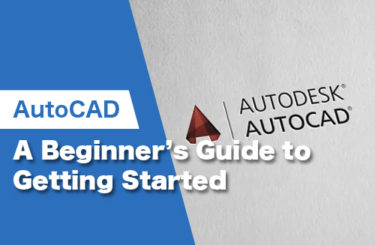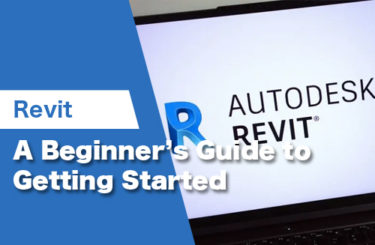The landscape of professional achievement is changing, and with it, the routes to a fulfilling and high-paying career. For those feeling lost in the shuffle, there’s a beacon of hope that merits serious consideration: AutoCAD certification.
AutoCAD, the cornerstone software for design and drafting across multiple industries, offers a unique and powerful opportunity for individuals to leapfrog traditional educational barriers and enter into lucrative careers. Whether it’s architecture, engineering, or graphic design, proficiency in AutoCAD opens doors to roles that are in high demand, rewarding, and, most importantly, well-compensated. This article aims to shed light on how an AutoCAD certification can be a game-changer for job seekers. By focusing on specific skills over conventional degrees, individuals can not only secure employment more quickly but also embark on a path that promises growth, innovation, and financial stability.
Let’s dive into the world of AutoCAD certification – a world where your skills, creativity, and technical prowess can pave the way to a successful and prosperous career, without the traditional college degree. Whether you’re rethinking your career path or seeking a fresh start, understanding the value of AutoCAD certification could very well be the first step towards a brighter, more secure future.
Understanding AutoCAD Certification
AutoCAD, developed by Autodesk, is the industry-leading computer-aided design (CAD) software, widely used for creating precise 2D and 3D designs in a multitude of fields, including architecture, engineering, and construction. Its importance in today’s job market cannot be overstated. Mastery of AutoCAD is a critical skill that employers look for, as it is essential for drafting and designing buildings, products, and infrastructures. With the world increasingly relying on digital models and simulations to optimize the planning and execution of projects, proficiency in AutoCAD has become synonymous with professional competence in design and engineering roles.
The Process of Obtaining AutoCAD Certification
So how does one go about getting certified? There are no strict prerequisites for pursuing AutoCAD certification, making it accessible to anyone with a keen interest in design and drafting. However, a basic understanding of engineering or architectural principles, as well as some familiarity with the software, can give candidates a head start.
Exam Details
AutoCAD certification exams assess a candidate’s ability to navigate the software, use essential features, and execute common tasks involved in designing projects. The certification is offered at two levels – AutoCAD Certified User and AutoCAD Certified Professional. The Certified User exam serves as an entry-level credential, focusing on basic functionalities, whereas the Certified Professional exam delves into more advanced techniques and applications.
Preparation Tips:
- Engage with Online Resources and Tutorials: Autodesk offers a wealth of learning materials, including tutorials, practice exercises, and webinars, designed to prepare candidates for the exam.
- Hands-On Practice: There’s no substitute for direct experience. Spend time working on diverse projects to familiarize yourself with a wide range of tools and features within AutoCAD.
- Take Practice Exams: These can help you gauge your understanding of the software and identify areas where you may need further study or practice.
Advantages of AutoCAD Certification
Certification validates your skill set, making you a more attractive candidate to employers. It can open doors to increased job opportunities in various industries that require precision design and drafting.
Certification can bring with it the potential for higher pay. Certified professionals often have a competitive edge in salary negotiations. Employers are willing to pay a premium for proven expertise, and AutoCAD certification is a tangible marker of such expertise.
Beyond the immediate benefits, certification demonstrates a commitment to professional development. It can lead to more advanced positions and opportunities to work on significant, high-impact projects. Furthermore, the skills acquired through certification are transferable, offering flexibility to move across sectors within the design and engineering fields.
Job Opportunities with AutoCAD Certification

With the world leaning more towards digital and precise planning, the demand for skilled AutoCAD professionals continues to grow. Here’s a look at some of the prominent job opportunities that become accessible with AutoCAD certification:
1. Drafting Technician
Drafters use AutoCAD to convert the designs of engineers and architects into technical drawings and plans. Working in fields such as civil engineering, architecture, and manufacturing, drafting technicians play a crucial role in the planning and construction process.
2. Architectural Designer
AutoCAD certification equips individuals with the tools to design buildings and structures with precision. Architectural designers focus on the aesthetic and functional aspects of building projects, working closely with architects to bring visions to life.
3. Civil Engineering Technician
These professionals support civil engineers in planning, designing, and overseeing construction projects like roads, bridges, and water supply systems. Proficiency in AutoCAD allows them to create detailed designs and site plans that serve as blueprints for actual construction work.
4. Mechanical Designer
Mechanical designers use AutoCAD to develop detailed 3D models of mechanical devices and machinery. This role requires a deep understanding of mechanics, materials, and manufacturing processes, making AutoCAD certification a valuable asset.
5. Electrical Drafter
Specializing in creating wiring diagrams and layout designs for electrical systems, electrical drafters support engineers in the development of electrical equipment, ensuring that installations meet standards and specifications.
6. Interior Designer
AutoCAD certification also benefits interior designers, who use the software to create detailed plans and visual representations of interior spaces. This aids in the planning of furniture arrangements, lighting, and décor, ensuring spaces are both functional and aesthetically pleasing.
7. CAD Manager
Experienced professionals can advance to become CAD managers, overseeing a team of designers and drafters. They ensure the efficient operation of CAD systems, manage software licenses, and develop standards and workflows for producing designs.
Maximizing Your Employment Potential with AutoCAD Certification
 Earning an AutoCAD certification is a significant step towards a successful career in various industries, but it’s just the beginning. To truly maximize your employment potential, it’s essential to strategically leverage your certification and the skills it represents. Here are key strategies to ensure your AutoCAD certification serves as a powerful asset in your job search and career advancement:
Earning an AutoCAD certification is a significant step towards a successful career in various industries, but it’s just the beginning. To truly maximize your employment potential, it’s essential to strategically leverage your certification and the skills it represents. Here are key strategies to ensure your AutoCAD certification serves as a powerful asset in your job search and career advancement:
1. Build a Strong Portfolio
Create a diverse portfolio that showcases your proficiency in AutoCAD. Include a variety of projects that demonstrate your ability to handle different types of drafting and design tasks. For each project, include brief explanations of your design process and how you utilized AutoCAD to achieve the final outcome. This will provide potential employers with insight into your problem-solving skills.
2. Stay Updated with Industry Trends
The fields of design and drafting are constantly evolving with new technologies and methodologies. Stay abreast of industry trends and updates to AutoCAD software to maintain your competitive edge. Consider learning complementary skills or software that can enhance your AutoCAD skills, such as Revit for BIM (Building Information Modeling) or 3D modeling software like Autodesk Inventor or SolidWorks.
3. Network and Engage with Your Industry
Organizations like the American Design Drafting Association (ADDA) or local engineering groups can provide networking opportunities, industry insights, and access to job openings. Engage with peers and experts in online forums and communities related to AutoCAD and your industry. This can lead to job opportunities and valuable learning experiences.
4. Leverage Social Media and Online Platforms
Ensure your LinkedIn profile is up-to-date with your certification, portfolio pieces, and relevant skills. Regularly post updates or articles related to your field to demonstrate your engagement and expertise. Use platforms like Behance or your own professional website to display your portfolio. This makes it easy for potential employers to view your work and understand your capabilities.
5. Prepare for the Job Market
Customize your resume and cover letter for each job application to highlight the most relevant skills and projects that align with the job requirements. Be prepared to discuss your AutoCAD projects and how you’ve applied your skills in practical scenarios. Practice articulating your thought process, challenges you’ve overcome, and how you’ve contributed to team projects.
6. Seek Out Mentorship and Feedback
Your certification is more than just a credential. It’s a testament to your commitment to your career and your ability to adapt and excel in a competitive job market. Use it as a foundation to build upon, and you’ll open doors to numerous opportunities for professional growth and success.
Find a mentor who is experienced in your field can provide guidance, career advice, and potentially introduce you to job opportunities. Regularly seek feedback on your work from peers and mentors. Constructive criticism can help you improve your skills and project outcomes.
Success Stories

The journey from obtaining an AutoCAD certification to achieving remarkable career success is best illustrated through real-world success stories. While respecting privacy and confidentiality, let’s explore generalized narratives inspired by true events. These stories showcase how individuals leveraged their AutoCAD certification to advance their careers, highlighting the transformative potential of this credential.
Story 1: From Aspiring Designer to Industry Leader
Alex’s Journey: Alex began as an aspiring designer with a passion for architecture but was uncertain about investing in a traditional four-year degree due to financial constraints. After discovering the opportunities AutoCAD certification offered, Alex embarked on a self-taught journey, utilizing online resources and community college courses. Upon earning the certification, Alex curated a compelling portfolio, showcasing innovative design projects. This portfolio, highlighted on LinkedIn and through networking, eventually caught the attention of a small architectural firm.
Career Growth: Starting as a drafting technician, Alex’s keen eye for detail and innovative designs propelled them through the ranks. Within a few years, Alex became the lead designer, overseeing significant projects. Their success story became a testament to the power of skill-specific education and the doors that AutoCAD certification can open.
Story 2: Engineering New Paths
Jordan’s Transition: Jordan, with a background in mechanical engineering, found the job market challenging amid economic fluctuations. Seeking to differentiate themselves, Jordan pursued AutoCAD certification, recognizing the demand for skilled CAD designers in the engineering sector. The certification allowed Jordan to showcase their enhanced skills, blending engineering knowledge with proficient design capabilities.
Achieving Success: The certification was a turning point. Jordan transitioned into a role as a mechanical designer for a leading manufacturing company, contributing to the development of groundbreaking products. Jordan’s story underscores the certification’s value in providing a competitive edge and facilitating career transitions within technical fields.
Story 3: Empowering Career Shifts
Sam’s Bold Leap: Sam spent years in a non-technical field, feeling unfulfilled and craving a more creative and impactful career. With a latent interest in interior design, Sam decided it was time for a change. AutoCAD certification emerged as a gateway to this new path, offering the foundational skills needed to enter the design world without starting from scratch.
New Beginnings: After obtaining the certification and building a diverse portfolio, Sam launched a freelance career, gradually gaining recognition for their unique designs. This eventually led to a full-time position with a renowned interior design firm. Sam’s journey is a powerful example of how AutoCAD certification can facilitate significant career pivots and fulfill lifelong passions.
Reflections
These stories reflect the transformative impact AutoCAD certification can have on individuals’ careers across different industries. Whether enabling career advancements, facilitating transitions to new fields, or empowering individuals to pursue their passions, AutoCAD certification stands out as a catalyst for professional growth and success. These narratives serve not only as inspiration but also as a blueprint for how to leverage certification for career advancement. They highlight the importance of continuous learning, networking, and strategic career planning in maximizing the potential of AutoCAD certification.
Conclusion
In closing, let this exploration of AutoCAD certification serve as both a guide and an inspiration. The journey to a rewarding career is multifaceted. While challenges are inevitable, the rewards of pursuing AutoCAD certification are clear: enhanced employ-ability, competitive advantage in salary negotiations, and access to a spectrum of high-paying jobs. By strategically leveraging this certification, alongside continuous learning and networking, individuals can not only navigate but thrive in the dynamic professional landscapes of tomorrow. AutoCAD certification, therefore, is not just a pathway to high-paying jobs; it is a bridge to a future where skill, creativity, and technical prowess are the cornerstones of professional success.







